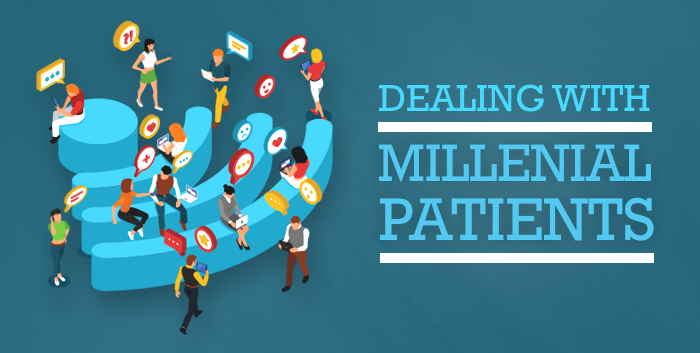According to a Pew Research Center analysis of U.S. Census Bureau data, Millennials have become the largest generational group in the United States. Along with this shift in demographics comes changes in experiences, attitudes and expectations, all of which have implications for varying businesses, including health care providers.
A 2012 study from ZocDoc and Harris Interactive found that millennials believe seeing a doctor is too much of a “pain.” Their frustration with the healthcare system has resulted in over half of respondents delaying seeking medical attention. Perhaps even more troubling was the fact 79% of those millennials surveyed believe it is easier to evaluate a new tech gadget than a doctor, and 76% feel it’s easier to find information about a hotel than a medical provider.
Read : How America Finds a Doctor?
While many small practice owners might feel attracting millennial patients – let alone caring for them – is too much effort, the fact remains this new generation of healthcare consumer is here to stay.
With this in mind, here are some ways you can attract and care for millennial patients.
Understand Their Love for Technology
Small practice owners would do well to understand how young adults use technology. Otherwise, your efforts to deploy digital marketing messages are all for not and you’ll waste money.
Remember the fiasco that was the HealthCare.gov website? Not only did that project contain many technical issues, but the website developers seemed to lack a basic understanding of the intended audience. As this Chicago Business article points out, had the developers understood the audience, the government website would have likely first been developed as a mobile app.
So, your goal is to understand that millennials are heavily invested in technology, and then get your own technology in order. For instance, with such high expectations, it’s important you take a look at how you deliver information to your patients, as well as how you offer scheduling. Make forms available on your website so patients can fill them out ahead of time online, consider adding electronic visits to your service offerings and Wifi access in your waiting room.
Embrace Social Media
While it may pain you to hear this, millennials expect to find all business professionals, including healthcare providers, on social media. This does not mean you have to have a presence on absolutely every social network, but you should have a Facebook page at least.
The benefit of having an online presence is you can more easily monitor feedback about your practice and make necessary adjustments to ensure patient satisfaction.
Expand Your Service Offerings
Many of today’s patients, millennials included, are often willing to pay extra for expanded service offerings, such as health coaching or counseling. Not only can this strengthen your doctor/patient relationships, it can also bring in extra income.
Provide Other Communication Channels Besides the Phone
The “coming of age” for many millennials happened during a time when email and text messaging were already commonplace. Because of this, many millennials view speaking on the phone as a bother. And they certainly don’t like being asked to hold to speak with someone about test results or making an appointment.
While millennials seem almost glued to their smartphones, few actually use the device to make a call. Practice owners should consider offering their millennial (and other) patients varying channels of communication such as communication dashboards, email, and text messaging.
Communication Risks
It should be noted that text-based communications can pose a security risk to patient privacy. For instance, text messages are typically not secure because of the lack of encryption. Also, it’s next to impossible for the sender to know, with absolute certainty, whether the message has reached the intended recipient. And finally, there’s the fact that wireless and telecommunication carriers may also store a copy of the message.
Having said that, providers may minimize this risk by conducting a risk analysis or by implementing a third-party messaging solution; one that incorporates measures that will establish a secure communication platform.
Providers can also exercise caution by limiting communication to administrative, scheduling, and logistical details via text.
By taking these necessary precautions, you reach millennial consumers through their preferred communication channels, which will benefit then and your practice.
For more information on how healthcare providers can protect themselves when communicating with patients, check out HealthIT.gov’s outlined communication strategy.
Be a Trusted Source of Information
Millennials are driven by information. It is how they make buying decisions and decisions about their own health. They want to hear from medical expert as well as peers about how to manage their conditions and their bills. No healthcare provider will possibly be able to have all of the answers their patients are searching for, which is why they will turn to social media, forums, and industry blogs.
Practice owners can take a cue from some of the biggest online marketers and social media influencers by embracing content curation, which is as important and powerful as content creation. You can share valuable information on numerous health topics through your social network pages or blog.
When your millennial patients have a question about the flu vaccine or finding the best insurance rates – you can share information you’ve found online. You look like the hero even though someone else did the heavy lifting.
As with many other aspects of their life, millennials want healthcare that is beyond the status quo. Those providers who choose to dismiss millennials desires and expectations will miss the opportunity to serve a segment of the population that is serious about their health and their future.

Reader Interactions
Trackbacks
[…] […]